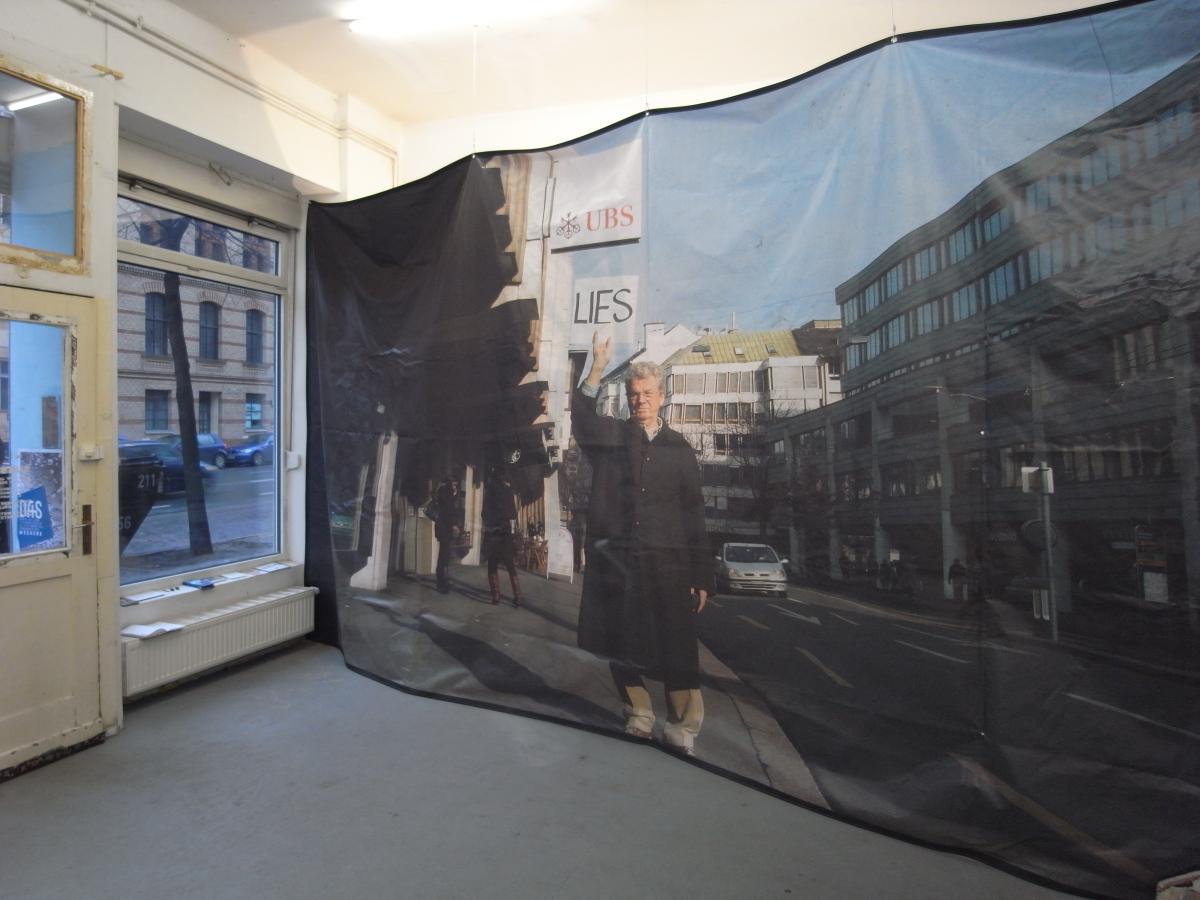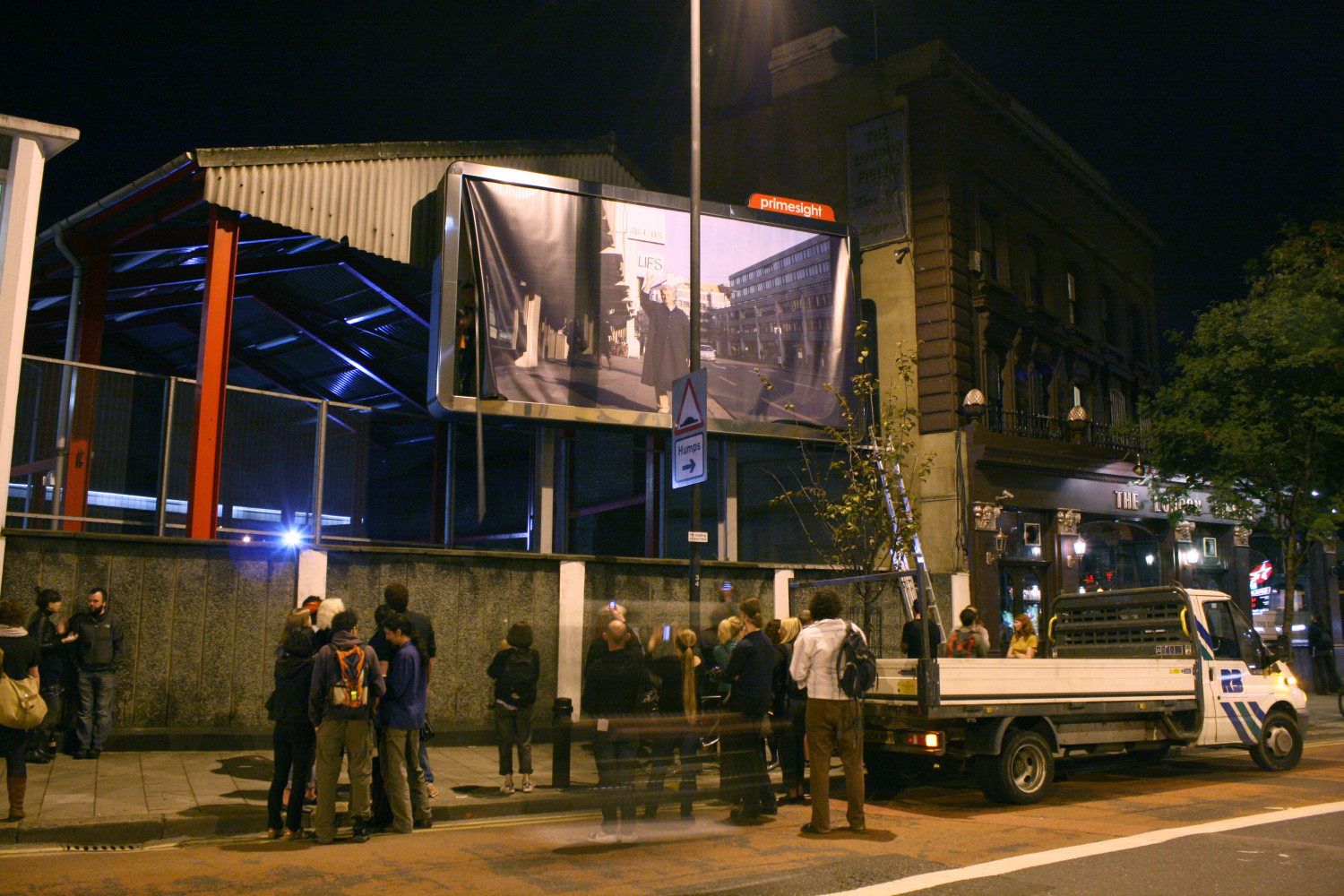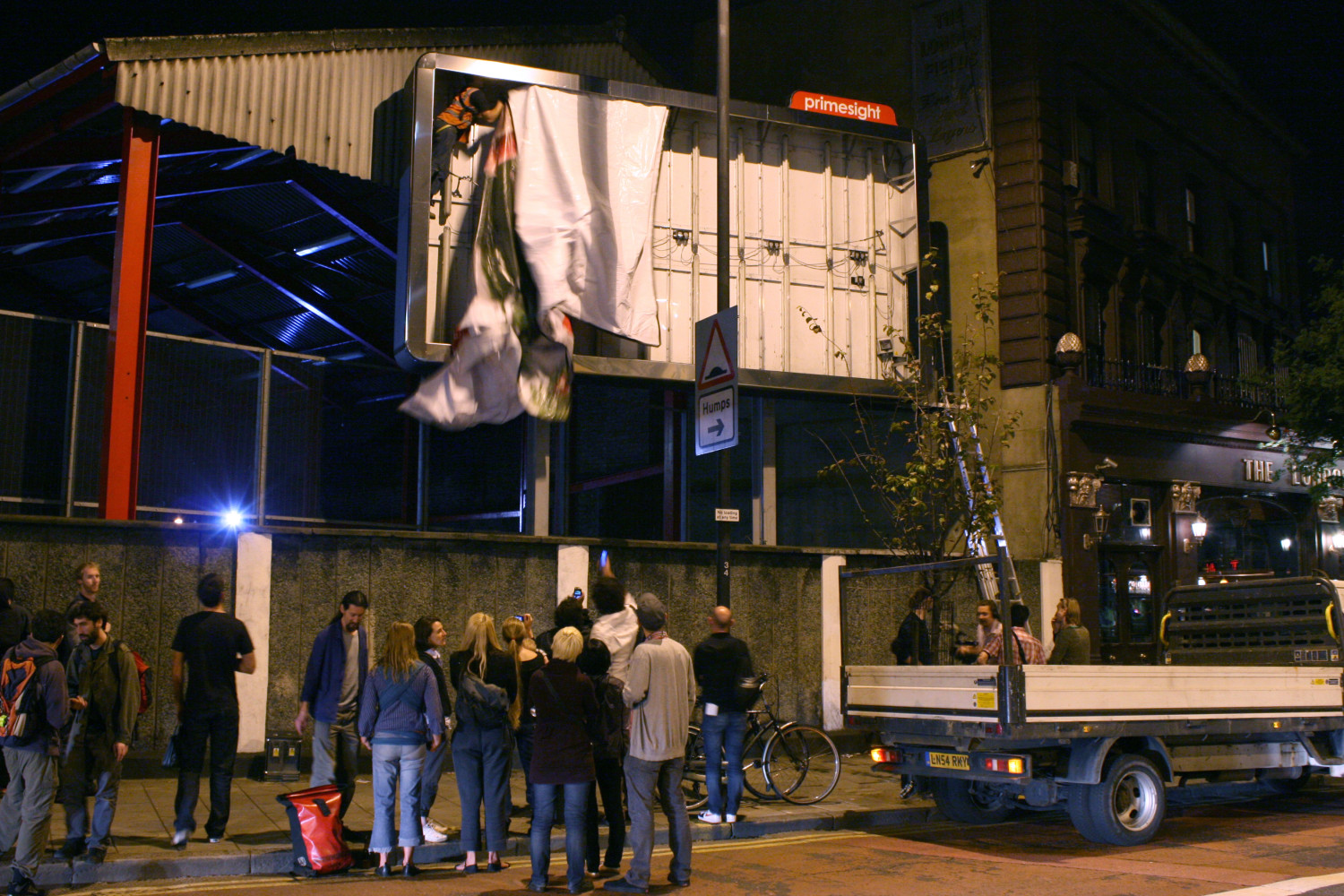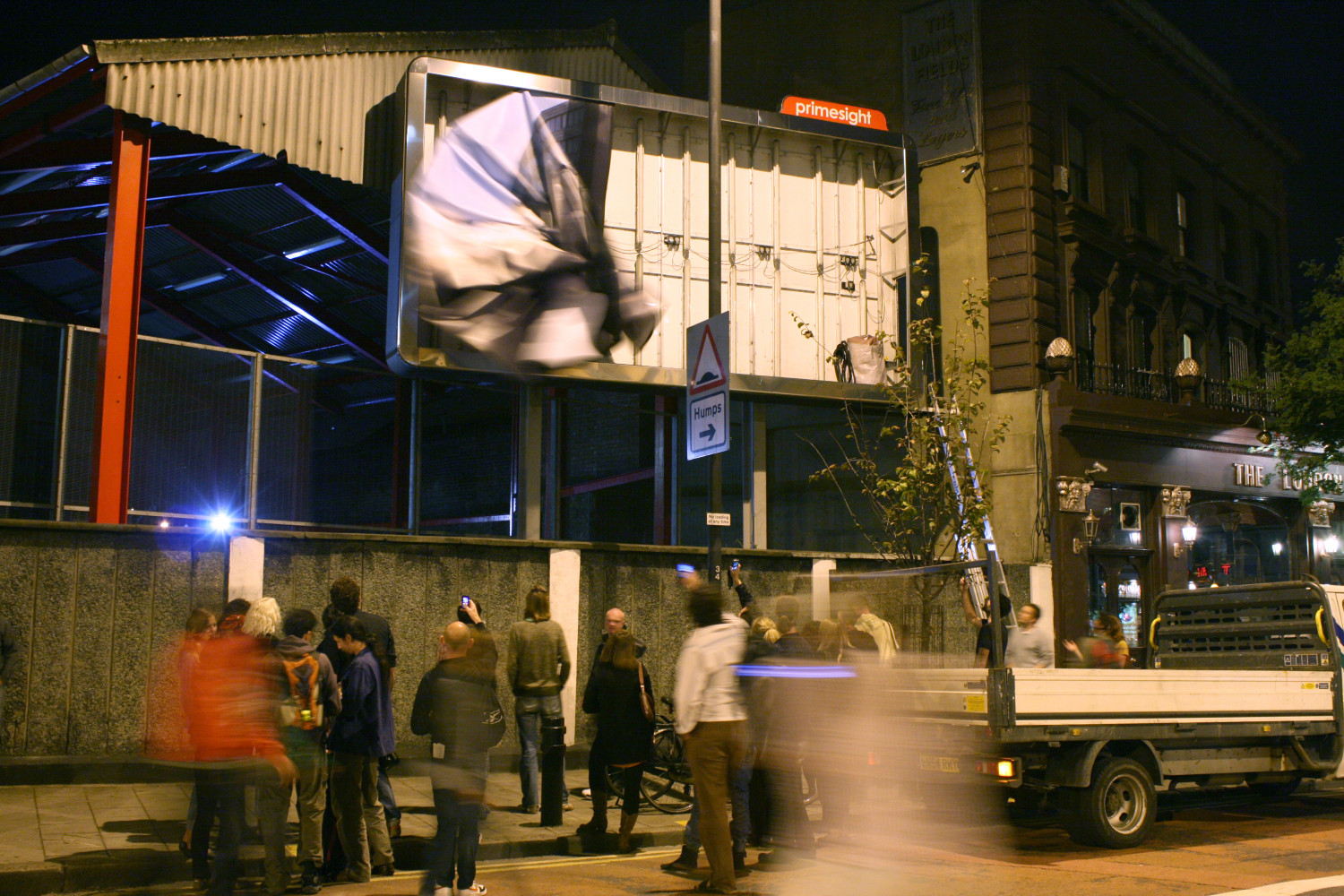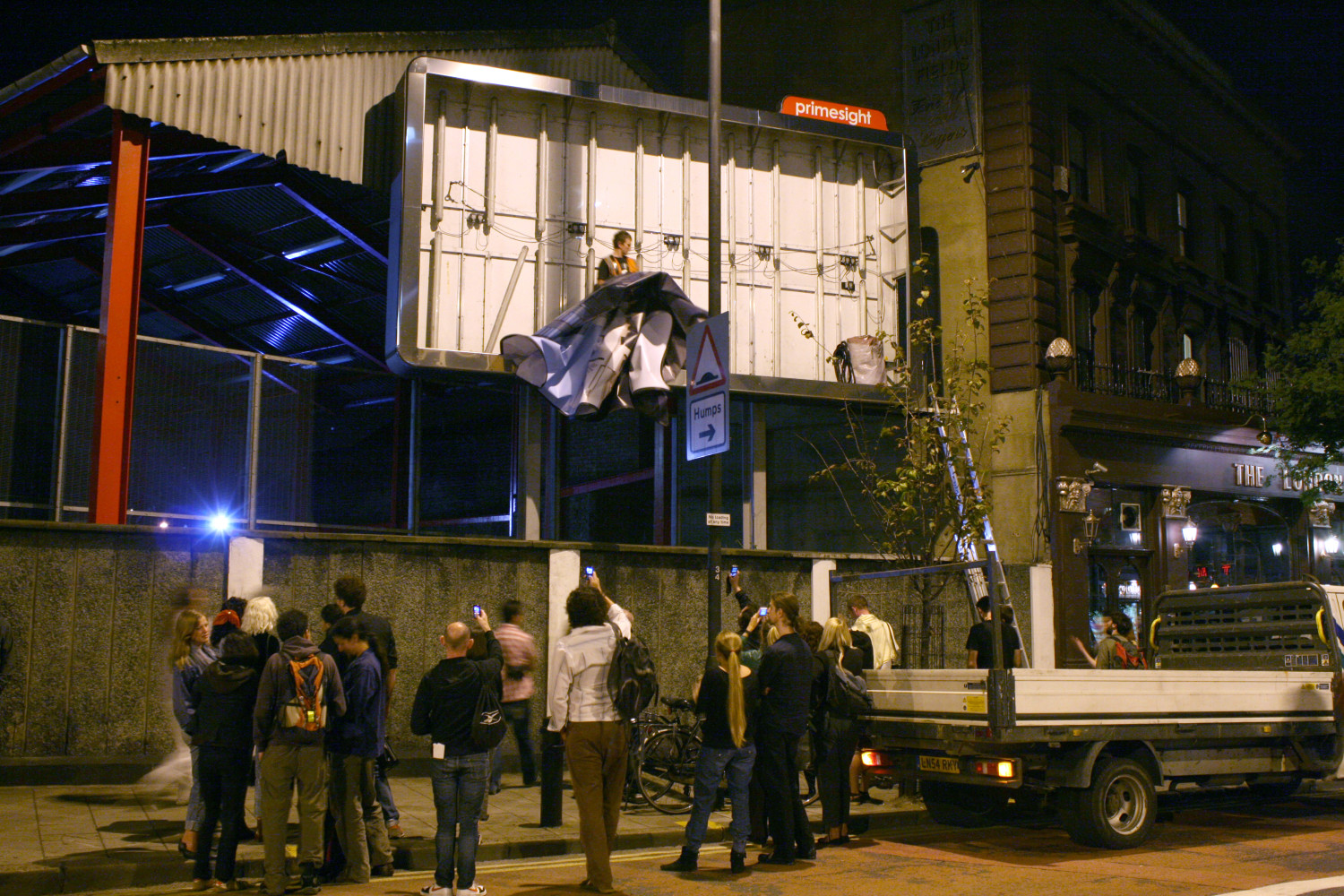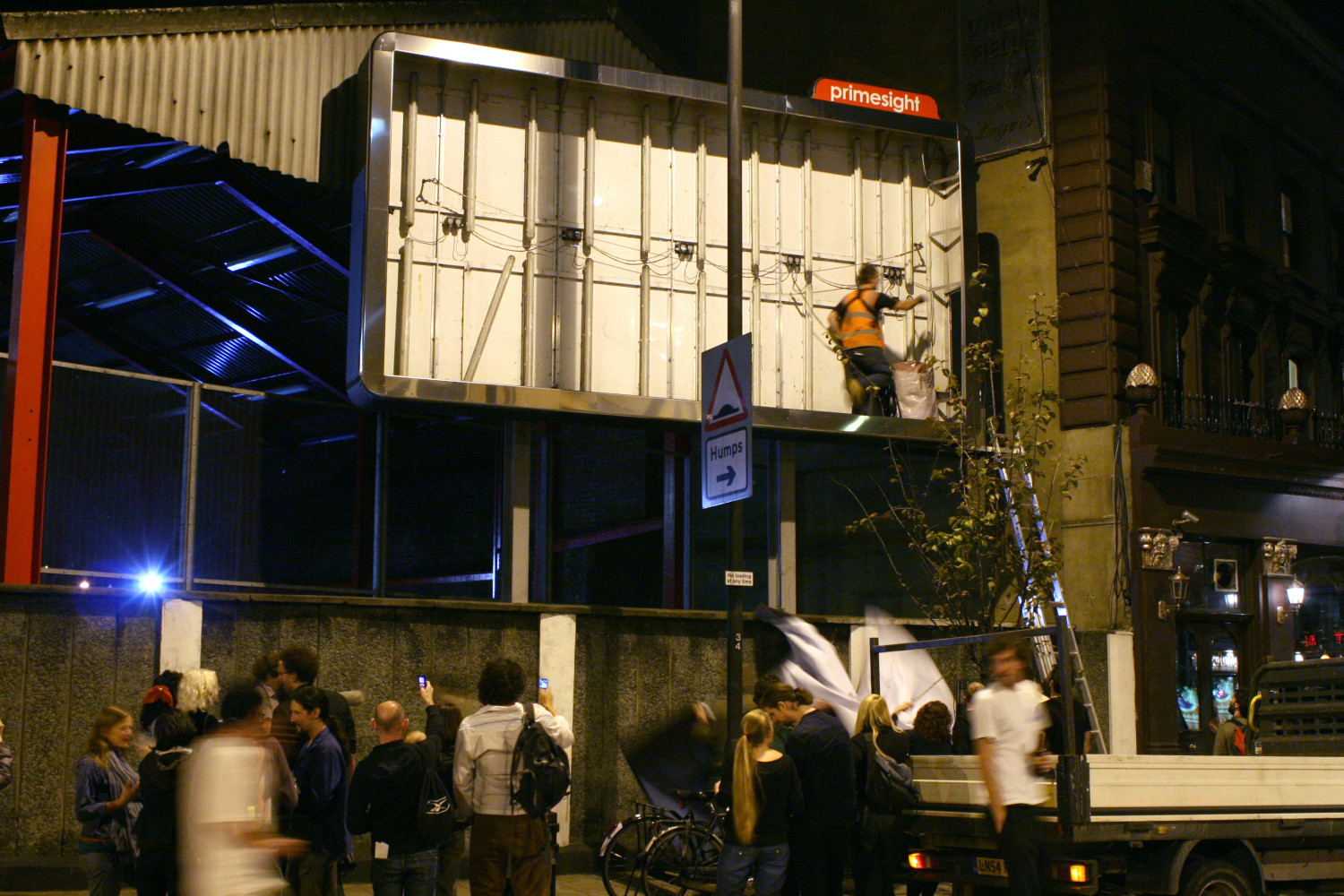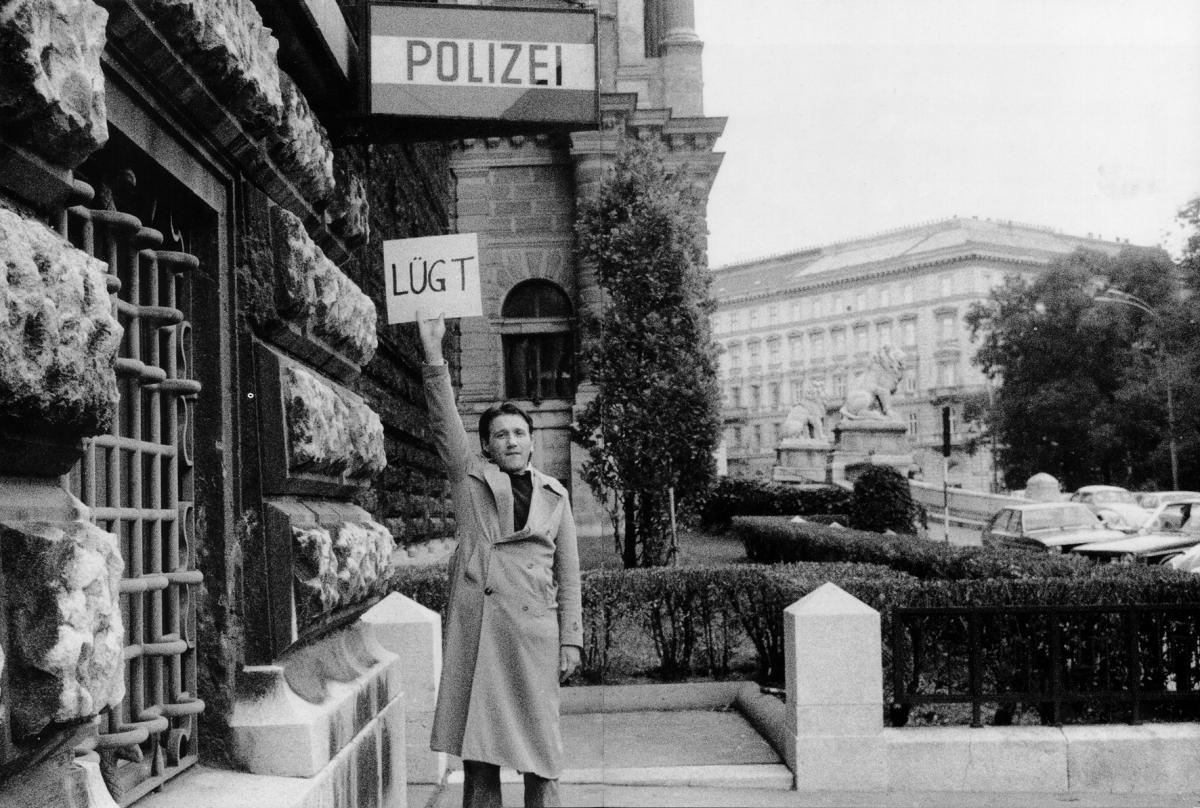
With UBS Lies !Mediengruppe Bitnik re-enacts Polizei lügt, a work by Austrian artist Peter Weibel from 1971. Weibel stood in front of a police station in Vienna, holding a sign saying ‘LÜGT’. Back then Weibel denounced the misuse of the state monopoly.
Whereas thirty years ago, the power lay mainly with the police as the executive organ of the national state, nowadays power and the abuse of power lie within the complex and hidden structures of global financial markets. It is this shift of power and these hidden and opaque structures of the global financial economy !Mediengruppe Bitnik is referring to in their work UBS lügt/UBS Lies. Although the re-enacted photo was taken thirty years later, the same feeling of unease and powerlessness surrounds both images.
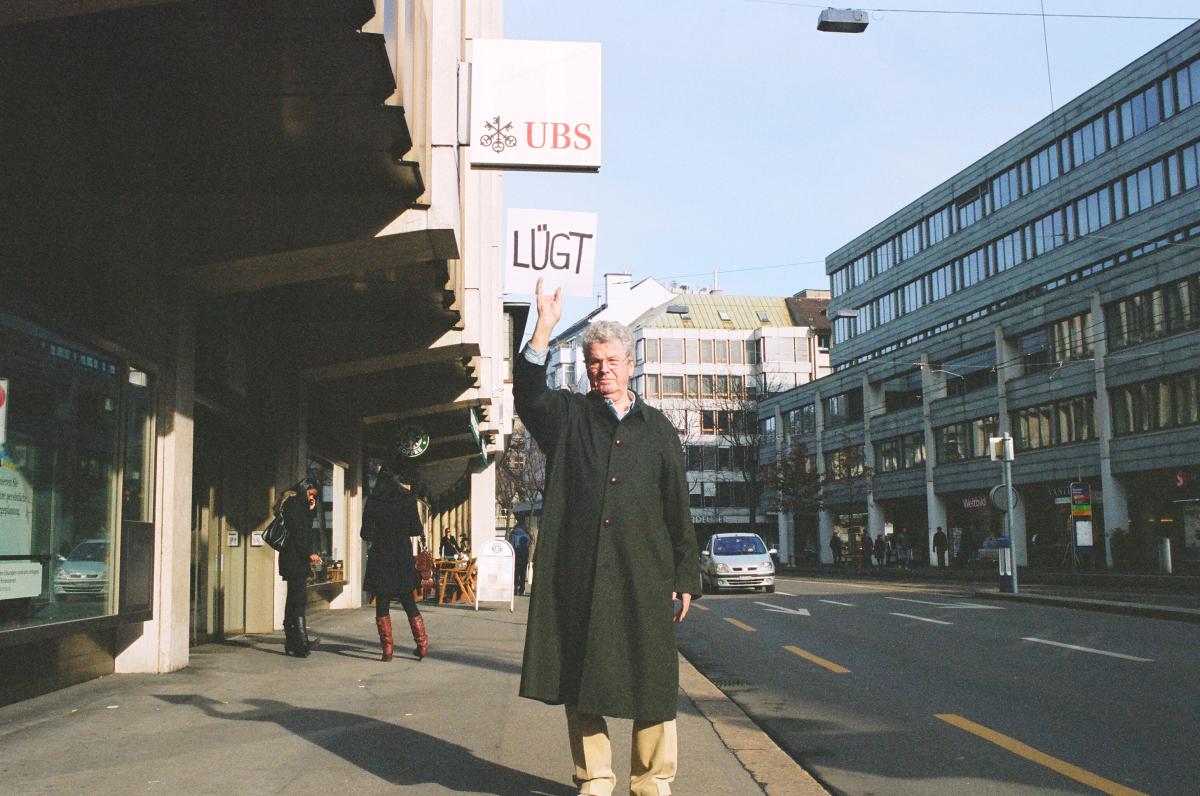
The re-enactment shows an investment banker who happened to walk by and participated in the shooting unasked. The shot of his quiet protest in front of a Zurich branch of United Bank of Switzerland (UBS) becomes UBS Lies: Attacks 1971/2009. Only one year before, in 2008, the financial crises reached its climax and the Swiss State saved UBS from bankruptcy by an infusion of capital. The image, as critical intervention into the financial system, became the central piece of the exhibition Too Big To Fail/Too Small To Succeed in London by being displayed on an illuminated billboard outside a London exhibition space.
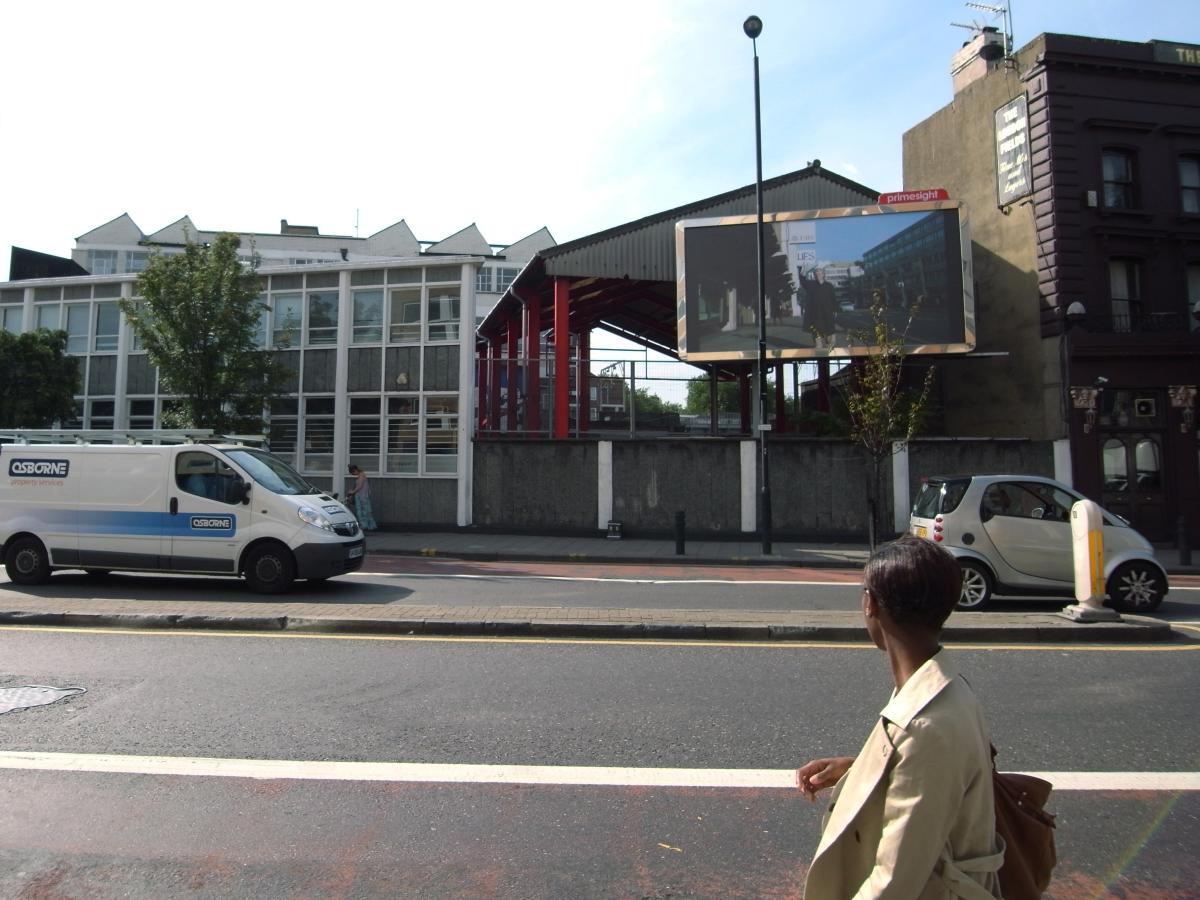
During the exhibition opening the work caused some uproar: the legal department of UBS had the image removed from the public billboard. In the case of further use or publication of the image UBS threatened to sue for libel. The censorship of Bitnik’s work after a single phone call by UBS, re-raised the same questions !Mediengruppe Bitnik had posed already, by re-enacting Weibel’s work Polizei lügt: Who is too big to fail and who is too small to succeed? Who is still part of the system? What role does artistic freedom play within this landscape? Who structures and controls public space? And who really decides on all these questions?
